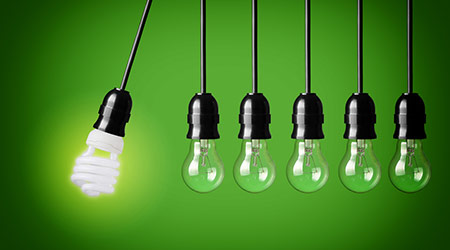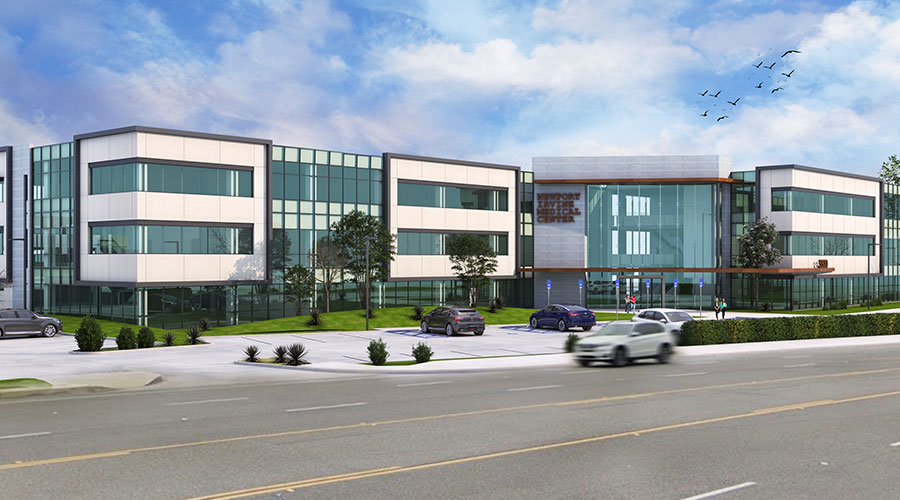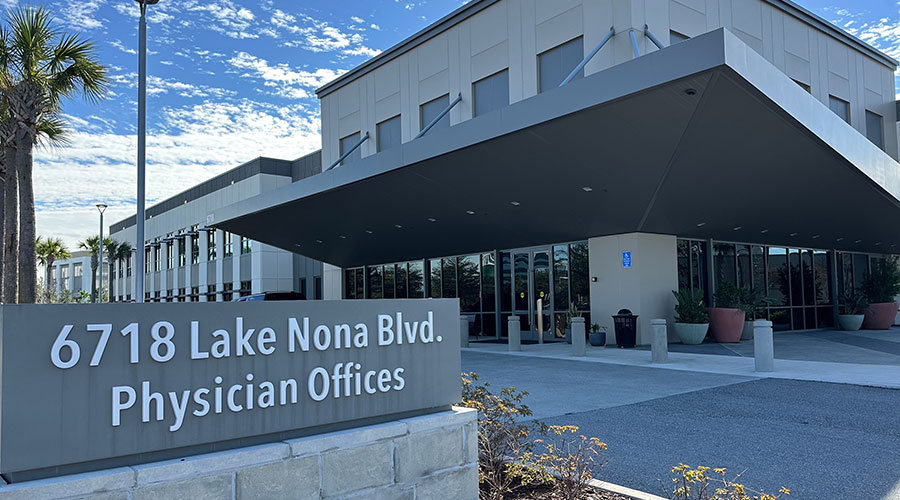Think for a moment about the lighting inside a typical healthcare facility or hospital. What often comes to mind is a setting that’s cold and sterile, perhaps artificially bright or unnaturally dark and maybe even punctuated by the incessant buzzing of long fluorescent tubes. That, however, is an image from another era.
Thanks to advances in lighting technology, control systems and incorporating natural light and shading, healthcare facilities of today are, no pun intended, casting a completely different light. Healthcare facilities employ advanced lighting design strategies to improve patient and visitor comfort, making it easier for staff to do their jobs and create a much more fitting environment for care overall.
On top of all that, contemporary lighting solutions are helping hospitals and healthcare facilities maximize energy efficiency while meeting energy and building codes. In short, lighting in a healthcare setting is not what it used to be — and for good reason.
Healthcare facilities were once largely typecast as stark, sterile environments — in large part due to lighting. Today there has been a shift toward a more occupant-centric, practical, and energy efficient lighting strategy. While the bottom line is ensuring there is adequate light for staff and patients, there is increased focus on how natural and artificial light affects occupants.
Attention has turned to how to best utilize lighting throughout the entire patient experience, from check-in to check-out and throughout the entire facility. Modern healthcare facilities are looking at lighting from a holistic and strategic viewpoint, one that includes a mix of both artificial and natural lighting in all areas of the facility.
Beyond the practical considerations of adequate lighting, research has shown that proper lighting can actually impact patient outcomes in the healthcare setting.
According to research compiled by the Center for Health Design, proper lighting can help reduce depression in some patients, cut agitation, ease pain and even reduce the length of hospital stays. Evidence has also shown the value of lighting when it comes to the absorption of vitamin D and treating jaundice in newborns.
Lighting is incredibly important when it comes to helping providers care for patients and perform their jobs. Not only does good lighting positively impact providers’ moods and stress levels, but a well-lit environment makes it easier for staff to complete tasks effectively.
Studies have shown, for example, that pharmacists make fewer errors when working in proper lighting conditions; similarly, good lighting has been proven to help nurses adjust better to working the night shift.
With lighting in a typical healthcare setting accounting for about 40 percent of electricity consumption, proper lighting, controls, and strategies can help reduce energy costs drastically. In fact, incorporating such controls — scheduling, occupancy sensors, dimming and others — can result in energy savings between 30 and 50 percent.
Healthcare facilities are also implementing a few of the latest approaches such as human-centric lighting into their lighting strategies.
Human-centric lighting (HCL) is essentially lighting that is designed and applied to improve occupant well-being such as improving productivity, mood, or sleep. Approaches include the use of modern tunable LED lighting to enable and natural lighting controls.
At one healthcare project, facility directors are looking at the application of tunable white in dermatology exam rooms to better simulate daylight which helps doctors examine skin complexions in various lighting conditions.
Another area where they are considering tunable white is in their Infusion Centers to help patients relax as they receive chemotherapy services. Tunable white is a growing topic of conversation in healthcare lighting projects.
In addition to the advances in artificial lighting, healthcare facilities are increasingly utilizing natural light as it is shown to have a positive impact on patients and healthcare staff. For example, many healthcare facilities are incorporating windows and skylights in spaces to let copious amounts of natural light into patient rooms, waiting rooms, and general gathering areas. In addition, daylighting control strategies, like daylight harvesting and incorporating shading systems, are being deployed to help optimize daylight.
Lighting control systems, such as the Wattstopper Digital Lighting Management (DLM) system by Legrand, have become integral to the deployment of these strategies. DLM is an intelligent, distributed control system with room controllers, occupancy sensors, switches, daylighting sensors, plug load controls, lighting control panels, interfaces and accessories.
Together, the system provides healthcare facilities convenient, energy-saving control of lighting and plug loads. It easily meets requirements like daylight harvesting and time-of-day controls.
If this all sounds like a much more advanced and intelligent approach to lighting in healthcare facilities — one that’s aimed at an improved environment for patients and providers that also saves energy and improves efficiency — that’s because it is.
The days of the cold and sterile hospital are gone. In their place, advanced lighting technologies, natural light solutions, and powerful control systems are all working together to create a new age of healing environments.
Randy Thomas is the director of architectural lighting control sales for Legrand Building Control Systems Division.

 States Move Forward to Better Protect Senior Citizens
States Move Forward to Better Protect Senior Citizens Archer and REDA to Transform Newport Beach Building into Outpatient Center
Archer and REDA to Transform Newport Beach Building into Outpatient Center Sunflower Medical Group Facing Lawsuit Following January Data Breach
Sunflower Medical Group Facing Lawsuit Following January Data Breach Nemours Children's Health Opens New Location in Lake Nona
Nemours Children's Health Opens New Location in Lake Nona Enhancing Safety at Hennepin Healthcare with a Screening System
Enhancing Safety at Hennepin Healthcare with a Screening System